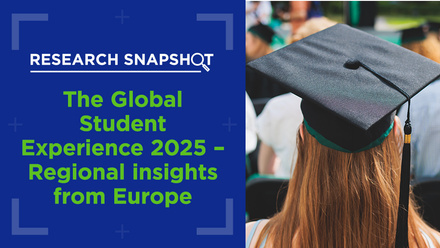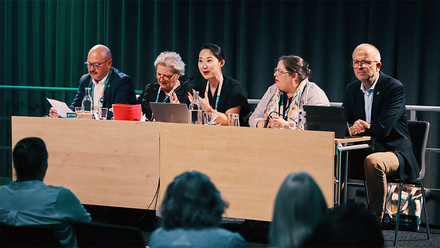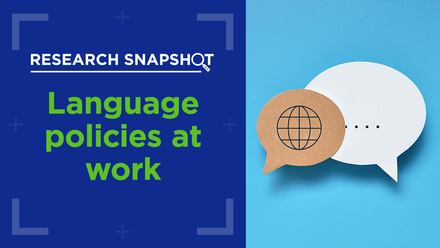EAIE Spring resource round-up: COVID-19

In just a few months the COVID-19 pandemic has radically changed both our daily lives and the field of international higher education more broadly. In this remarkably short period of time, we’ve been confronted with social and economic crises that have pushed our societies to untested limits. For many of us, the most immediate and tangible manifestations of these dynamics have been the extensive limitations on mobility and interpersonal engagement that not only affect us personally but have also created enormous new challenges in our working lives. Indeed, these developments have forced all of us to reconsider how we approach our work at the present moment and to question what the future holds for our field.
Luckily, fast on the heels of recent events, we’ve also seen an enormous outpouring of energy and activity focused on helping us make sense of the rapidly-changing world around us. Of course, keeping up with the onslaught of new information can itself be a challenging task. So, if getting a quick overview of recently released resources is just the kind of support you’re looking for at this stage, do read on!
Just the facts
Hungry for some data? Facts and figures can be an extremely helpful resource at a time of major disruption and change, and several organisations have been working to provide this kind of information to help map the landscape and provide insight into possible future directions. The EAIE’s own Coping with COVID-19: International higher education in Europe report is an example of this kind of resource. Released in March 2020, the report provides information on how respondents at more than 600 institutions in 38 countries across the European Higher Education Area have experienced mobility disruptions, approached management and messaging in response to the crisis, and are considering future implications of the pandemic. Parallel surveys have been conducted nationally in the United States by the Institute of International Education and in Canada through the Canadian Bureau for International Education. Results from a global survey undertaken by the International Association of Universities should also soon be available.
For perspectives on how the COVID-19 outbreak has been experienced by students in the European context, you may want to check out the Erasmus Student Network’s (ESN) recent Student Exchanges in Times of Crisis report. Based on more than 21,000 student respondents, this study helps shed light on the main challenges students have faced in relation to the pandemic, and offers ten key recommendations for moving forward, several of which were discussed in a COVID-19: What Erasmus students want you to know.
Further surveying efforts are either underway or expected from these and other organisations in the coming weeks and months, which will ideally add to an evolving, data-driven picture of the issues, challenges and opportunities being presented by the COVID-19 crisis. Stay tuned.
Suggestions for stakeholder care and support
While the effects of the pandemic on institutions and economies, for example, are enormously important, one of the most compelling impacts of the current crisis has been the human toll. Individuals, including students and academic and administrative staff, have been faced with tremendously difficult and stressful situations in recent weeks, leading to a heightened interest in matters of well-being within the international education community. An impressive array of responses aiming to address these types of concerns have likewise been in evidence, from the EAIE and other relevant actors.
For example, in February 2020, Steering group members of the EAIE Expert Communities Mobility Advising and Guidance and Counselling quickly authored a blog focused on Supporting students affected by coronavirus. In April, the first episode of the EAIE’s new Community Moments webcast series showcased the matter of placing care at the centre of COVID-19 responses, while an April EAIE webinar instalment featured the subject of helping students thrive in a newly online environment.
Other useful resources in this area have included (out of the UK) the WonkHE podcast on mental health and COVID-19, and (out of the US) the American Council on Education’s ACE Engage series of webinars, which has included 'Managing well-being during the COVID-19 crisis' and 'Advising students virtually in uncertain times'.
Tips for tackling technology
The lightning-fast pivot to online ‘everything’ due to the dictates of social distancing has been immensely exciting for some and highly challenging for many. To help guide us over the hurdles associated with rapid adoption of technology and virtual engagement, many different resources have been put forward.
Just this month, for example, the EAIE released its Spring 2020 issue of Forum magazine on the very timely subject of 2020 Spring Forum: Digitalisation. With articles on virtual mobility, teleconferencing and digital credentials, and exploration of matters such as data security, digital equity and preparing students for life in a digital society, this publication offers an expansive and right-on-time consideration of our current digital realities.
Of course, many different articles have been published in the higher education press in Europe and elsewhere, offering excellent perspectives on how individuals can and are leveraging technology under the current circumstances. From the Chronicle of Higher Education’s Going Online in a Hurry: What to Do and Where to Start, to Times Higher Education’s Could online exams transform how we think about learning?, we have much to learn about the power and potential of educational technology as the COVID-19 crisis unfolds.
Redefining ‘ready’ and finding our way forward
Which leads us to some considerations for the future.
Not only are we dealing with the shifting landscape beneath our feet right now, but we’re also being asked to speculate about the future, as we work to plan for the coming academic year and beyond. This may be the toughest challenge we face at the moment: attempting to gauge what the future will bring. There is clearly no fool proof way to do this, but there are some compelling and thoughtful insights being generated and shared within our community, from the notion of a “post-mobility world” to the sense that COVID-19 represents a “revolution that isn’t”. These reflections point to some of the key issues we’ll likely need to consider as we redefine what it means to be ready to for the new academic year.
There has been a steep learning curve in the last couple of months in relation to crisis management and anticipating possible risks ahead. And with an uncertain end to the pandemic, these concerns will be with us for some time. The EAIE has attempted to foster greater discussion through the 17 April episode of the EAIE Community Moments webcast, which featured the topic “Risk mitigation strategy: What does it mean to you?”. On 7 May, we’ll be offering an EAIE webinar that will explore emerging lessons in crisis response and management.
As so much of our work in international education is connected to international student mobility, and this area has been so dramatically affected by the pandemic, trying to understand those dynamics is also of high importance. For this reason, our 24 April EAIE Community Moments webcast shone a spotlight on the topic of smart international student recruitment in uncertain times” and offers some practical ideas for institutions seeking some actionable advice. Meanwhile, resources like Studyportals’ COVID-19 Dashboard offer real-time insights into student thinking about their mobility interests and plans.
Preparing ourselves for what’s ahead is also about envisioning the future we want. To this end, the EAIE’s 02 April An open letter to the European Commission: COVID-19 and beyond offers a roadmap for action and emphasis that clarifies some key objectives and helps align us around a common cause: a healthy future for Europe and its international higher education sector.
We will require many additional resources to see us through this difficult and complicated moment. Creating those as a community, and sharing them widely, will hopefully enhance their relevance and value as we walk together down this new and uncertain path.






